

By Thin Lei Win
ROME, April 30 (Thomson Reuters Foundation) - Half a century ago farmers grew rice, sesame and pulses on the land around Myint Soe's village in Myanmar. Now only paddy fields remain.
Technology has made farming easier but government policy and climate change have slashed the foods produced by villagers which they fear is killing them when combined with the explosion in fast-food. "Now we don't know where the oils we eat come from because we buy what's quick and cheap and easy," said Myint Soe, 59.
He said many people are suffering from cancer, hardening of the arteries and other ailments, likely caused by eating low-quality oil, sugary drinks, salty snacks and instant noodles.
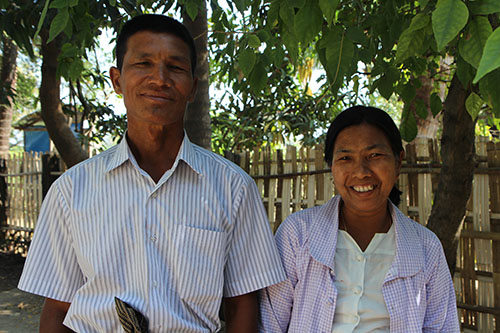
Farmers Kyaw Lin and his wife, Tin Aye poses for the camera at their home in Thar Yar Su village near the capital Naypyitaw in central Myanmar, on Feb 14, 2019. Thomson Reuters Foundation/Thin Lei Win
Fellow farmer Kyaw Lin, 47, said younger, thinner people were now having strokes.
What is happening in Thar Yar Su is just a microcosm of one of the world's biggest problems - deadly diets, which have now overtaken smoking as the world's biggest killer.
Data shows one in five deaths worldwide in 2017 was linked to unhealthy diets in both poor and rich countries as burgers and soda replaced traditional diets and a warming planet impacted the variety of crops grown.
The Global Burden of Disease study by the U.S.-based Institute for Health Metrics and Evaluation said unhealthy eating is killing 11 million people a year, up from 8 million in 1990 - while smoking kills about 8 million people a year.
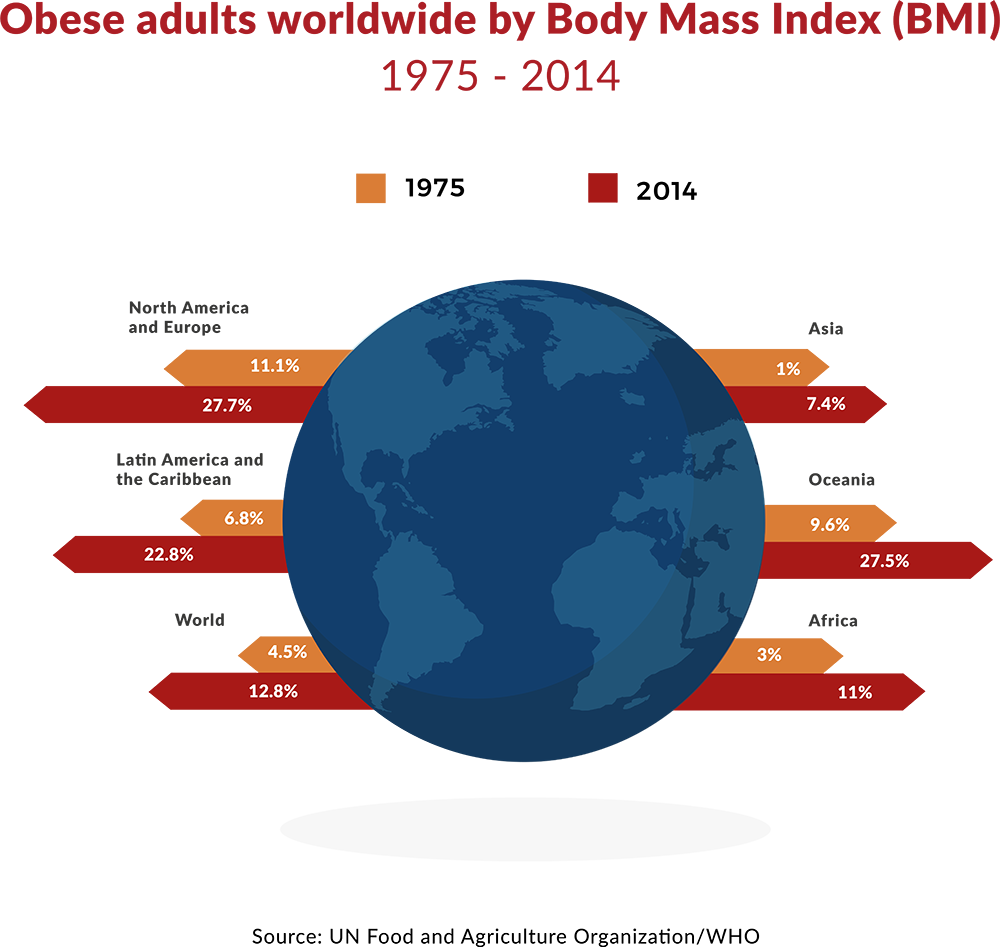
Meanwhile billions of people lack the nutrients their bodies need.
United Nations' figures show the global population is both hungrier and heavier than it was five years ago, and food and policy experts fear the escalating food crisis could fuel conflicts and migration without action to reverse this trend.
"We cannot only focus on tackling hunger anymore," Jose Graziano da Silva, head of the U.N. Food and Agriculture Organization (FAO), said of the agency's plans for the next two years. "We are witnessing the globalisation of obesity."
Jessica Fanzo, a professor at Johns Hopkins University and co-chair of the annual Global Nutrition Report - described as the world's most comprehensive report on nutrition - said diets were "the number one cause of disease, disability and death".
"We've already reached the tipping point," she added, emphasising that "massive changes" were needed.
Too many children are not growing and developing properly due to a lack of food while obesity is escalating, she said.
After decades of concentrating on how to feed an expanding global population, political leaders are realising that nutrition - not hunger - is the new frontier, and the focus is shifting from providing enough food to food that is good.
Alan Dangour, professor at the London School of Hygiene and Tropical Medicine, said governments have not thought enough about how environmental change will impact food.
"We could have successful trade policies which enable food to be passed between countries in a sensible way, in a fair way," he added. "If that doesn't happen, we could see civil unrest (and) mass migration."

Vikas Garg, founder of abillionveg, a mobile phone app that reviews vegetarian and vegan dishes, demonstrating how to use it in Singapore on Feb 12, 2019. Thomson Reuters Foundation/Thin Lei Win
Gerda Verburg, U.N. assistant secretary-general and coordinator of the Scaling Up Nutrition Movement, told a public forum in Rome this year that the future of food was "not in the calories ... but in the quality and diversity".
Governments, companies and aid agencies are now racing to shake up the world's unhealthy food habits, using legislation, educational campaigns, new and reformulated products, and greener ways of farming.
The challenges, however, are huge - not least because climate change threatens to reduce both the quantity and quality of crops, lowering yields.
Nutrition researchers said healthier, plant-based traditional foods and plant species are being shunned for Western fast-food diets laden with sugar, salt and fat.
The fruits and vegetables backed by nutritionists as crucial to good health were expensive for many, while research funding for them was "virtually non-existent", said Emmy Simmons, senior adviser at the Washington DC-based think-tank Center for Strategic and International Studies.
That is why the farm sector must adapt to make healthier foods accessible to all, said Marie Ruel, director of poverty, health and nutrition for the Washington-based International Food Policy Research Institute (IFPRI).
The latest Global Burden of Disease study found the world on average ate only 12 percent of the recommended amount of nuts and seeds - but drank 10 times more sugary drinks and consumed nearly twice as much processed meats.
Modern diets are contributing to ballooning overweight and obesity figures, and a rise in non-communicable diseases (NCDs) such as stroke, cancer, diabetes and heart disease.
Treating these diseases will cost the world more than $30 trillion - about 40 percent of today's global GDP - between 2010 and 2030, according to a report from the World Economic Forum and Harvard University.
"Today, not a single country has been able to reverse the trend in obesity and NCDs," said Karel Callens, deputy leader of FAO's strategic programme to end hunger and malnutrition.
"People are starting to suffer from all those chronic diseases at a much earlier age because now they're getting exposed to poor nutrition, bad diets and lifestyles from a much earlier age."
This situation could cause life expectancies to fall, experts warned, including in wealthy countries like Spain, home to the famed Mediterranean diet long praised by nutritionists for being rich in olive oil, fish and fresh produce.
For that traditional diet has been abandoned by the younger generation in favour of fast-foods like burgers, sodas and french fries, said Miguel Angel Martinez-Gonzalez, professor of preventive medicine at the University of Navarra in Pamplona.
This was the main reason about 35 percent of Spanish adults are now obese and close to another 35 percent overweight, he said.
"This is a failure and a humiliation for public health," said Martinez-Gonzalez.
Big food corporations have put a lot of effort and money into thwarting public campaigns and research to improve diets, he said, a charge echoed by other scientists and nutritionists.
For example, in 2016, companies making sugary drinks spent almost $50 million lobbying against U.S. government initiatives to reduce consumption of the beverages, wrote a team of experts led by New Zealand's University of Auckland in January.
In Africa, the situation looks particularly dire, said IFPRI's Ruel, as economies, populations and cities are predicted to expand quickly in the coming decades.
Hunger alongside obesity and an emphasis on calorific staple crops, together with rising incomes and availability of unhealthy foods bode ill for the continent, she said.
Asian nations are fighting similar challenges.Myanmar hopes to diversify what its people eat and grow to help the 30 percent of adolescent girls now anaemic due mainly due iron deficiencies and one-fifth of women who are overweight.
That includes cultivating crops other than the staple rice - such as pulses, vegetables and fruit - using better fertilisers and improving livestock production, said Kyaw Swe Lin, director-general at the agriculture ministry.
Additional threats to diets stem from the world's failure to rein in carbon dioxide (CO2) emissions, the main greenhouse gas that is heating up the planet, according to scientists.
Agriculture, forestry and other uses of land account for nearly a quarter of greenhouse gas emissions, according to the FAO.
Atmospheric concentrations of CO2 emitted by burning fossil fuels, clearing forests and other actions could reach 550 parts per million (ppm) by 2050, reducing iron, zinc and protein levels in staple crops, said Samuel Myers, principal research scientist at the Harvard T.H. Chan School of Public Health.
In 2017 concentrations of CO2 hit a record high of 405.5 ppm, figures from the World Meteorological Organization showed.
Vitamins and minerals are vital to human development, disease prevention and wellbeing, yet more than 2 billion people are estimated to be deficient in micronutrients, according to the U.S. Centers for Disease Control and Prevention.
Working with scientists growing six staple foods across three continents, Myers and colleagues estimated that in 2050, emissions would cause zinc-deficiency in an additional 175 million people and protein-deficiency in 122 million more.
South and Southeast Asia, Africa and the Middle East would be most at risk, but the nutrient reductions may be less obvious than a loss of calories, so people may not adapt their diets without a push, they added.
On the other hand, hotter temperatures could actually offset nutrition loss linked to higher CO2 levels, said a study by researchers from the University of Illinois and U.S. Department of Agriculture (USDA) published in January.
This two-year field study of soybeans found increasing temperatures by about 3 degrees Celsius (5.4F) boosted the amount of iron and zinc in the crop.
They are now trying to understand the causes and whether humidity plays a part, said Carl Bernacchi, a scientist at the USDA's Agricultural Research Service.
Rising temperatures and erratic rainfall associated with climate change would also exacerbate water scarcity, change the relationships between crops, pests and pathogens, and shrink the size of fish, scientists have warned.

A global review of historical reports by researchers from the University of Sydney and University of Queensland warned that more than 40 percent of insect species were at risk of extinction, mainly because their habitats had become farm land.
Climate change could worsen their decline, further damaging food networks, other scientists have said.
Earlier this year, scientists led by the Harvard T.H. Chan School of Public Health and Germany's Potsdam Institute for Climate Impact Research unveiled an ideal diet for the health of the planet and its people.
It was dominated by fruit, vegetables, nuts, seeds and legumes, most of which depend on pollinating insects, said Harvard's Myers.
"I want to shine a spotlight on the need to start embracing more pollinator-friendly practices," added Myers, who has started studying the demise of insects.
Dangour, from the London School of Hygiene and Tropical Medicine, said sub-Saharan Africa and South Asia - where food demand was expected to rise the most, according to the World Bank - would likely be hit hardest by falling yields.
This could create "a tremendous imbalance in where people live and where food is", he said.
Governments may be slow to react, but scientists, economists and entrepreneurs are coming up with some innovative ideas about how to change agriculture and launching revolutionary products, some based on ancient foods.
For example, improved knowledge of the vast community of microbes living inside humans has led to a better understanding of health and disease in the past decade.
These microbes, especially in the gut, have been linked to depression, allergies and obesity - and they are affected by diets and exposure to antimicrobials, biologists said.
Antimicrobials are drugs that destroy dangerous pathogens, making them essential for human and animal health, but whose misuse and abuse can lead to drug resistance.
They are used to promote growth in livestock farming and aquaculture - and also in crops - thereby entering the human food supply, said FAO's Callens.
Research by the U.S.-based University of Georgia found a correlation between obesity rates and the amount of antibiotics prescribed in each U.S. state between 2011 and 2014, linked to the way antibiotics disrupt stomach bacteria.
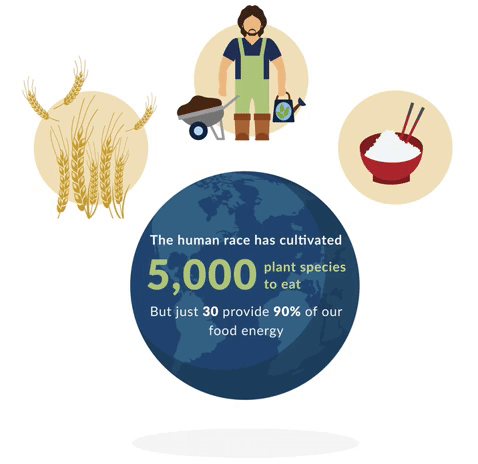
This points to how the industrialisation of agriculture, while allowing the world to feed a growing population, is having unintentional consequences for human health, Callens said.
"We really need to rethink, not just what and how we eat as people, but how we actually produce and process food," he said.
In the Asia-Pacific - home to the largest number of hungry and malnourished people and where obesity is rising - businesses are coming up with ways to keep weight down and diseases at bay.
These include seafood grown in a lab, plant-based alternatives to meat to suit the Asian palate, and fibre and sugars that can lower the glycemic index of food, a measure of how quickly it raises blood sugar levels.
This could help reduce the incidence of diabetes, which affects 422 million people globally and killed about 1.6 million in 2016, according to the World Health Organization.
In India, confectionery giant Mars Inc and charity Tata Trusts recently launched a snack made from yellow peas, targeting people like Chhaya Sunil Jadhav, a local health worker whose daughter fell ill from eating cheap, salty chips.
"If it is nutritious, I will buy this," said Jadhav, trying the new crunchy squares, which cost 10 rupees ($0.15) per pack and are high in iron, protein and vitamins.
Other food aficionados are rediscovering local, often forgotten, grains and plants that are inexpensive and easily available, such as moringa from which Cameroonian mother and entrepreneur Rosette Fien makes organic cereals for children.
Brazilian chef Bela Gil uses babassu coconut flour, rich in iron, fibre and vitamins, from the Amazon to make healthy cookies, while Indian chef Anahita Dhondy is popularising traditional cereals such as millet and sorghum.
Healthier diets could also require consumers in rich countries to reduce their meat intake.
So scientists and vegetarian advocates are turning to more subtle ways and an understanding of human nature to shift behaviour, instead of relying on laws and food taxes.
Those measures include tweaking the names of dishes to make them sound indulgent and tasty - like "slow-roasted caramelised zucchini bites" instead of "lighter-choice zucchini".
At the other end of the spectrum are millions of refugees and people forced from their homes whose health and nutrition are highly dependent on food from governments and aid agencies.
As seen in camps for families who have fled violence in Burkina Faso, most had to leave their animals behind, and have no land to grow their own fresh food.

Women pound millet at a camp for internally displaced persons in Barsalogho, Burkina Faso, March 3, 2019. Thomson Reuters Foundation/Nellie Peyton
With U.N. figures showing wars, persecution and other violence have driven a record 68.5 million people from their homes, more people than ever are dependent on food aid - and for longer periods, making it critical for rations to be nutritious.
But the majority must survive on cereals, beans and oil, because it is too expensive for humanitarian agencies to distribute meat, milk and vegetables, aid workers said.
"We're covering the basics. If we could do more we would want to do more," said David Bulman, the U.N. World Food Programme representative for Burkina Faso, citing funding as the main constraint.
Providing a wholesome diet in refugee camps, remote areas and places with few resources is a logistical and cost challenge, especially when some residents are there for decades.
"The modern-day crises are not short-term," said Corinna Hawkes, director of the food policy centre at City, University of London and co-chair of the Global Nutrition Report.
"There's no question that the current world of food aid is not fully caught up with that."
Even for those not trapped in a crisis, nutritious foods like fruit and vegetables are often costly and out of reach.
This is partly because they are in short supply - a situation that is unlikely to change, according to a study by researchers, led by the University of Illinois, published last December.
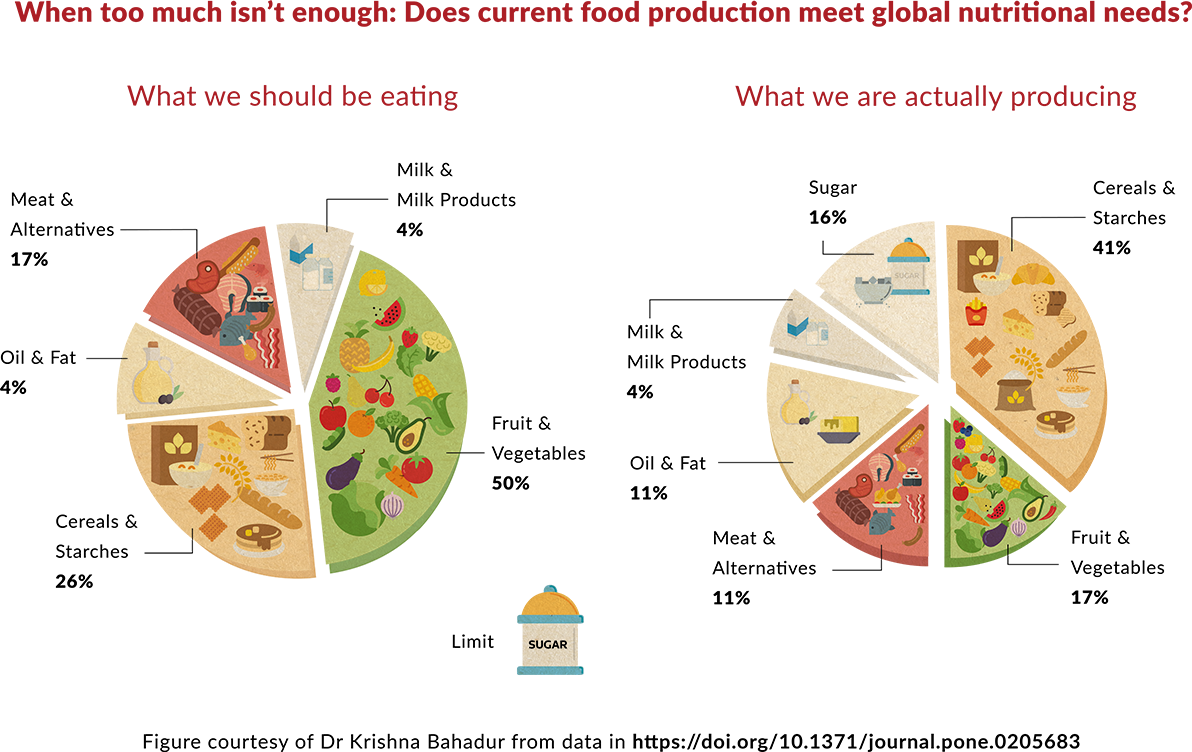
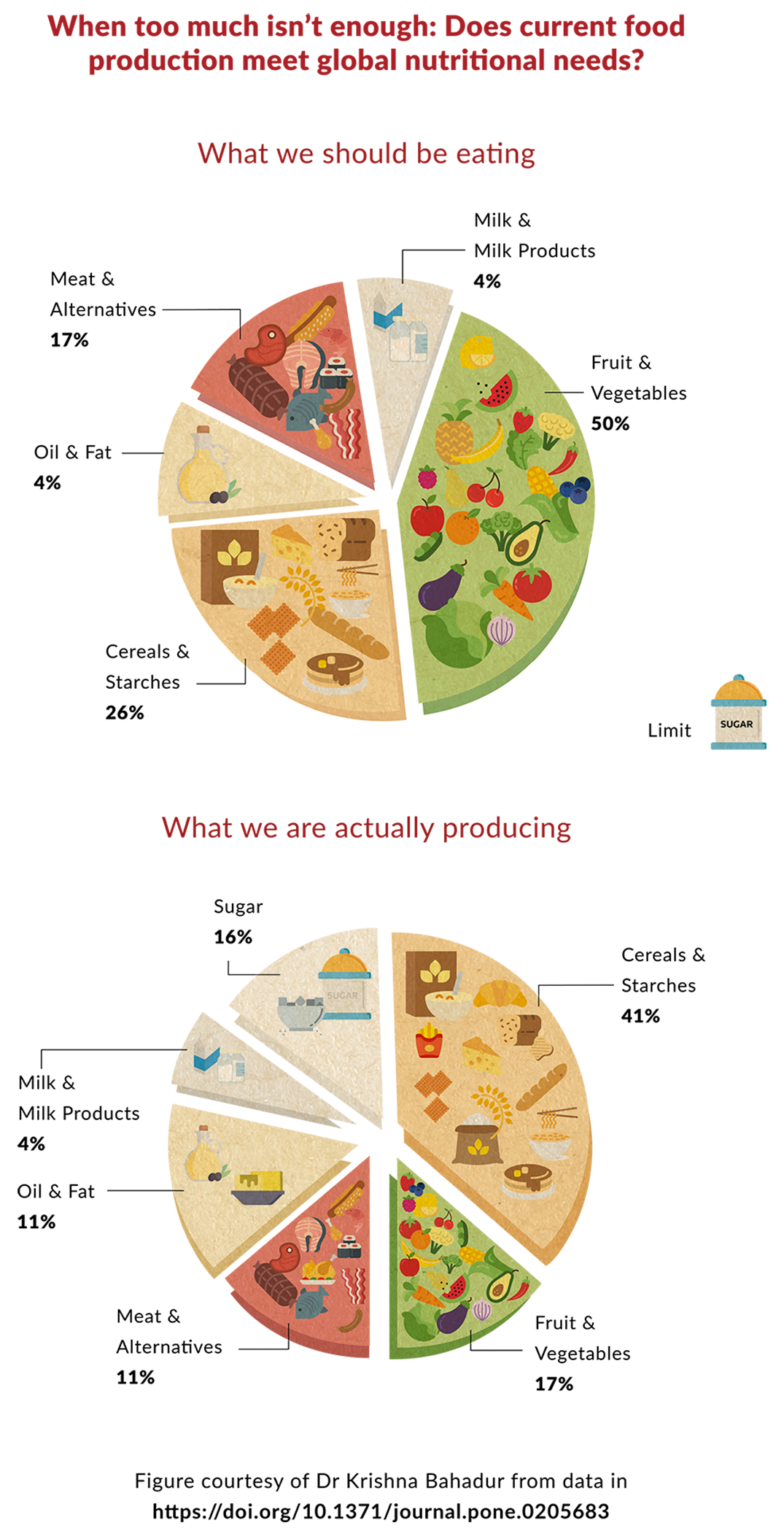
If the world wants more healthy food, producing fruit and vegetables has to be profitable but is hampered by a lack of reliable water supply, land tenure and labour, said Christopher Barrett, a professor at New York's Cornell University.
Part of the problem is agricultural subsidies focused on grains and cereals, which Barrett said amounted to more than $1 billion a day in high-income countries.
"It's absolutely absurd. And it's not at all aligned with what's most necessary for good human health," he said.
While the knowledge already exists to feed the world's population well without destroying the planet, using it effectively is a matter of political and personal will, nutritionists and scientists said.
"If we can employ very sophisticated technology to send people into space, why can't we tackle something very basic, which is how to feed ourselves and stay healthy?" asked FAO's Callens.
(Reporting by Thin Lei Win; additional reporting by Annie Banerji, Inna Lazareva, Karla Mendes, Anuradha Nagaraj, Nellie Peyton, Megan Rowling, and Ellen Wulfhorst; editing by Megan Rowling and Belinda Goldsmith. Please credit the Thomson Reuters Foundation, the charitable arm of Thomson Reuters, that covers humanitarian news, climate change, women's and LGBT+ rights, human trafficking and property rights).
news.trust.org

Our global editorial team of more than 50 journalists and about 250 freelancers covers the world’s under-reported stories at the heart of aid, development, women’s and LGBT+ rights, human trafficking, property rights, and climate change. Our global editorial team of more than 50 journalists and about 250 freelancers covers the world’s under-reported stories at the heart of aid, development, women’s and LGBT+ rights, human trafficking, property rights, and climate change.
FIND OUT MORE